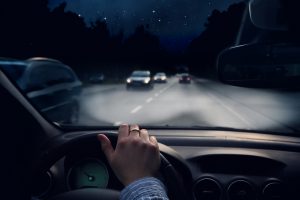
Yes, you can drive with high beams on a divided highway to improve visibility and safety. High beams should be used judiciously to avoid blinding oncoming drivers.
Driving with high beams on a divided highway can help illuminate the road better, especially in areas with little ambient light. This can be particularly useful during nighttime or in rural areas where there are fewer streetlights. It’s important to switch to low beams when approaching vehicles from the opposite direction to prevent glare and ensure the safety of all road users.
Remember to follow traffic regulations and use high beams responsibly to avoid accidents and uphold road safety standards.
Navigate As You Want: [show]
Understanding High Beams
High beams are a type of vehicle headlight that provides a stronger and brighter light. They are designed to be used in areas with no other traffic around. When driving on a divided highway, you can use high beams if there are no oncoming vehicles. It’s important to remember to switch to low beams when approaching another vehicle to avoid blinding the driver. Using high beams improperly can be dangerous and illegal, so it’s crucial to understand when and where it’s appropriate to use them.

Credit: driving-tests.org
Driving With High Beams On A Divided Highway
What is a divided highway? A divided highway is a road with a barrier or median that separates traffic moving in opposite directions.
When driving with high beams on a divided highway, you should be aware of blinding other drivers and causing distractions.
Challenges include reduced visibility due to glare, which can make it difficult to see other vehicles and road signs properly.
Safety tips for driving with high beams on a divided highway include switching to low beams when approaching other vehicles and using high beams only when no traffic is around.
Legal Considerations
Driving with high beams on a divided highway can be legal if there are no oncoming vehicles. However, using high beams inappropriately can blind other drivers and lead to accidents. It is important to follow the laws regarding when to use high beams on divided highways to ensure safety for yourself and other road users.

Credit: issuu.com
Alternatives To High Beams
When considering alternative lighting for driving at night, it is important to be mindful of when you should utilize these options. In certain scenarios, such as when there is oncoming traffic or when driving in well-lit urban areas, using high beams may not be necessary and could be potentially blinding to others. In such cases, it is advisable to switch to alternative modes of lighting to ensure safety for all drivers on the road.
Types of alternative lighting for driving at night include:
| Option | Usage |
|---|---|
| Low beams | Appropriate for general nighttime driving, especially in areas with other vehicles present |
| Fog lights | Beneficial in adverse weather conditions with reduced visibility |
| Daytime running lights | Useful in urban areas at night where full high beams may not be necessary |

Credit: www.thv11.com
Frequently Asked Questions For Can You Drive With High Beams On A Divided Highway
Can You Drive With High Beams On A Divided Highway?
Driving with high beams on a divided highway is not recommended as it can blind oncoming drivers and create a dangerous situation. High beams should only be used in areas with low traffic or when there are no oncoming vehicles.
It is important to switch to low beams when approaching other drivers to maintain safety on the road.
Conclusion
Using high beams on a divided highway requires caution and consideration for other drivers. It’s important to be aware of the potential blinding effect on oncoming traffic and adjust accordingly. By understanding the regulations and responsibilities, drivers can ensure safety for themselves and others on the road.





